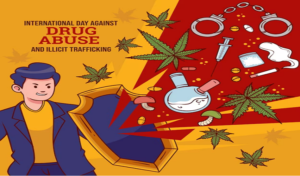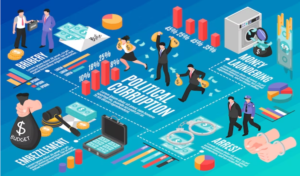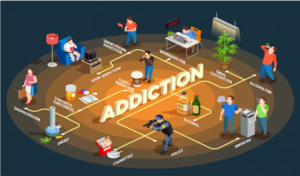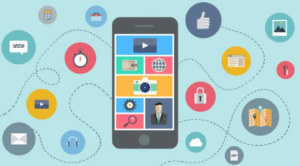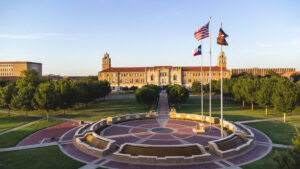Examining the drug trade at the regional and international level

Welcome to the strange and dark world of the US drug trade. It’s a fascinating and scary world where billions of dollars are made and thousands of lives are wrecked. In this blog, we’re going to look at the drug trade from a regional and a worldwide perspective. Get ready to find out about the main people involved, how it affects society, and what is being done to stop this complicated and dangerous problem.
First, let’s take a quick look at the drug trade in the United States. It’s no secret that drugs like cocaine, heroin, and methamphetamine are a big problem in this country. In fact, drug overdoses are now the top cause of death in people under the age of 50 in the United States. But the drug trade isn’t just a problem for public health; it’s also a very profitable business worth billions of dollars. There are a lot of people who make, distribute, and sell illegal drugs. This includes both street dealers and foreign cartels.
So, why is it important to look at the drug trade both locally and globally? First of all, knowing the complicated web of people involved in the drug trade can help us come up with better ways to stop it. When we look at the big picture, we can figure out where drugs come from, how they are moved, and who is making money from them. Also, studying the drug trade can help us learn more about the social and economic costs of drug abuse and drug-related crime, which can help shape policies meant to avoid and treat drug abuse. So let’s get ready and jump in!
US drug trade in the region
Let’s learn more about the drug trade in different parts of the US. Each part of the country has its own drug trafficking routes, which are based on things like geography, population, and police action. For example, because the Southwest is close to the Mexican border, it is a big place where drugs like weed and methamphetamine are sold.
Both cartels and street gangs are important in the drug trade in the area. Cartels are usually organised criminal groups that work in more than one area or even across foreign borders. On the other hand, street gangs tend to be more localised and often fight deadly turf wars over where to sell drugs.
Drugs that are commonly sold in each area are different. For example, opioids like fentanyl are a big problem in the Northeast, while cocaine is more common in the Southeast. Trafficking in marijuana is popular all over the country, and in some areas, trafficking of strong strains like “dab” and “shatter” is on the rise.
Overall, it’s important to understand the drug trade in an area if you want to come up with effective ways to stop it. By knowing what makes each area different, law enforcement can better target trafficking routes and break up criminal organisations.
US drug trade with the rest of the world
Now, let’s talk about the foreign drug trade in the United States. Most of the drugs used in the US are brought in illegally from other countries, mostly Mexico and Colombia. Most of the time, these drugs are moved by land, air, or sea, and they are often hidden in cars, cargo packages, or even human couriers.
Foreign gangs and trafficking groups are the main players in the international drug trade. For example, the Mexican Sinaloa gang is responsible for a lot of the drugs that are smuggled into the United States. These drugs include cocaine, marijuana, and methamphetamine. Other players include drug gangs from Colombia and groups from places like China and India that bring drugs like fentanyl and synthetic opioids into the country.
Cocaine, heroin, and fentanyl are all drugs that are often smuggled across foreign borders. In recent years, there have been more deaths from overdoses because these drugs are often very strong and can be very dangerous. It’s important to know that the international drug trade doesn’t just involve illegal drugs. Prescription drugs are also brought in from other countries and sold on the black market.
To fight the international drug trade successfully, it’s important to focus on both the supply and the demand sides of the problem. This includes working with other countries’ governments to break up drug trafficking groups and catch drugs before they reach the US, as well as taking steps to reduce the market for drugs in the US.
How the drug trade affects life in the US
The drug trade has a huge and far-reaching effect on society in the United States. The economic and social costs of drug use are one of the most important effects. Some of these costs are lost work time, health care costs, and costs for the criminal justice system. Also, drug abuse can cause a lot of other problems in society, like family breakups, poverty, and being homeless.
Violence and crime are also made worse by the drug trade in many places across the country. Part of the reason for this is that drug trade groups often use violence to protect their turf and scare off competitors. People who are addicted to drugs can also turn to crimes like theft and prostitution to pay for their habit.
Law police and the criminal justice system are also affected by drug trafficking in a big way. Drug-related crimes can take a lot of time and money to investigate and punish, and many law enforcement agencies are already working hard to stop the drug trade. Also, crimes related to drugs often lead to long jail terms, which can put a strain on the criminal justice system and make prisons too full.
Overall, the drug trade has a lot of different effects on US society. To solve this problem, we will need a comprehensive plan that includes methods for prevention, treatment, and enforcement.
Efforts by the government to stop the drug trade
At both the federal and state levels, the US government has set up a number of programmes to fight the drug trade. Among these projects are efforts to stop drugs at the border, prosecution of drug traffickers and people who commit crimes related to drugs, and programmes to stop people from becoming addicted to drugs.
How well these tactics work can vary. For example, interdiction attempts can stop a lot of drugs from getting through, but they can be expensive and hard to keep up over time. Prosecution can be an effective way to break up drug trafficking groups, but it can also make jails too full. Drug demand can be lowered by prevention programmes, but they need to be funded and supported for a long time to work.
When trying to stop the drug trade, law enforcement has to deal with a number of problems. It’s hard to track down and stop drugs, and drug crime groups often use violence. Also, the ways drugs are made and sold are always changing. A lot of drug-related crimes are also caused by poverty and social inequality. This shows how important it is to take a multifaceted approach that deals with the reasons of drug addiction.
How tech is used in the drug trade
Technology changes have had a big effect on the drug trade in the United States. One of the best examples is the use of the “dark web,” which has made it easier for drugs to be sold and passed around online. This has let drug crime groups do business without being seen and reach a bigger market.
But law enforcement is also using technology to stop drug trade. This includes using high-tech tracking and interception tools as well as data analytics to find drug trade groups and break them up. Also, law enforcement organisations are using social media and other digital technologies to gather information and find possible threats.
Even though technology could help fight the drug trade in some ways, there are also problems. As technology keeps getting better, drug crime groups will probably find new and better ways to run their businesses. So, it’s important for law enforcement to stay ahead of the curve and keep changing their tactics to keep up with how the drug trade is changing.
Conclusion
In the end, the drug trade is a complicated problem that has big effects on communities all over the United States. This piece looked at the regional and international aspects of the drug trade, as well as its economic and social costs and the different ways people have tried to stop it.
Even though changes in technology have given law enforcement new problems to solve, they have also given them new ways to fight the drug trade. But it is clear that there is still a lot of work to do to solve this problem in a good way.
In the future, it will be very important for law enforcement to keep changing its plans and using new tools to stay ahead of drug trafficking groups. Also, policymakers need to deal with the social and economic issues, like poverty and inequality, that lead to drug addiction. By taking a multifaceted approach that includes prevention, prosecution, and treatment, it may be possible to lessen the harm caused by the drug trade and make communities safer and healthier for everyone.
Read More You May Like:

